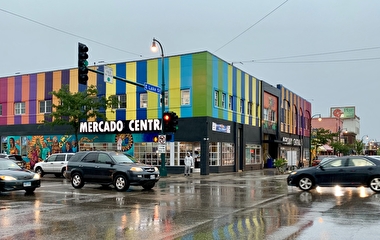An 18-page report is now available that synthesizes the findings of the ABC Ramps Transportation Options Program Plan.
The Minnesota Department of Transportation (MnDOT) sponsored the 18-month study to take a look back at the parking ramps’ history, understand current usage and challenges, and plan the future of these facilities. Components of the project were split among U of M researchers and several transportation consulting firms. Frank Douma, director of the State and Local Policy Program at the Humphrey School of Public Affairs, was the principal investigator.
The ABC Ramps are the ending point for I-394, which connects Minneapolis to its western suburbs. Completed in 1992, the ramps were designed to ease congestion and improve air quality by encouraging carpooling and transit use. Now, however, the ramps are increasingly used by solo drivers and fill up during peak times, and surrounding roads and streets are congested.
Through surveys and other activities, the researchers found that ramp users want flexibility, and many who drive alone want to take transit at least some days. Users are also interested in new technologies, such as mobile apps for multimodal trip planning or carpool match-making.
New programs and innovations could reduce solo driving and help fulfill the ramps’ original mission, the researchers say. Options include flexible contracts, employer incentives that bundle parking and transit, and mobility hubs that let commuters switch easily between transportation choices.
The report also calls for continued assessment of a potential game-changer: connected and automated vehicles, which may—or may not—cut parking demand or dramatically change the ways the ramps could continue their mission.




